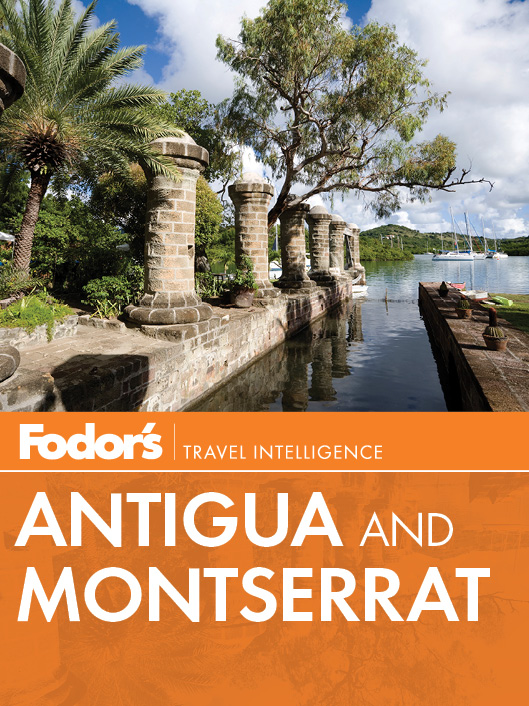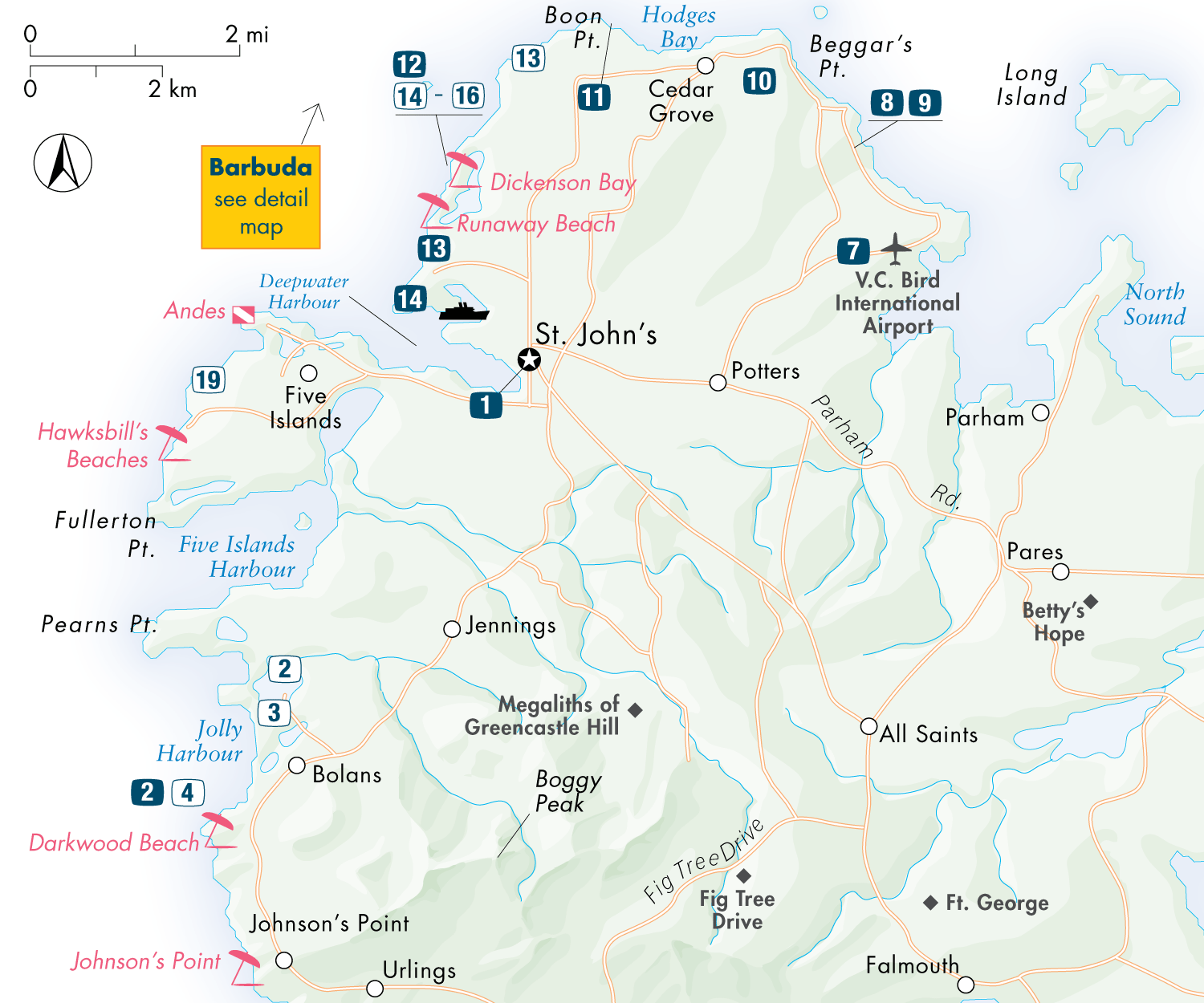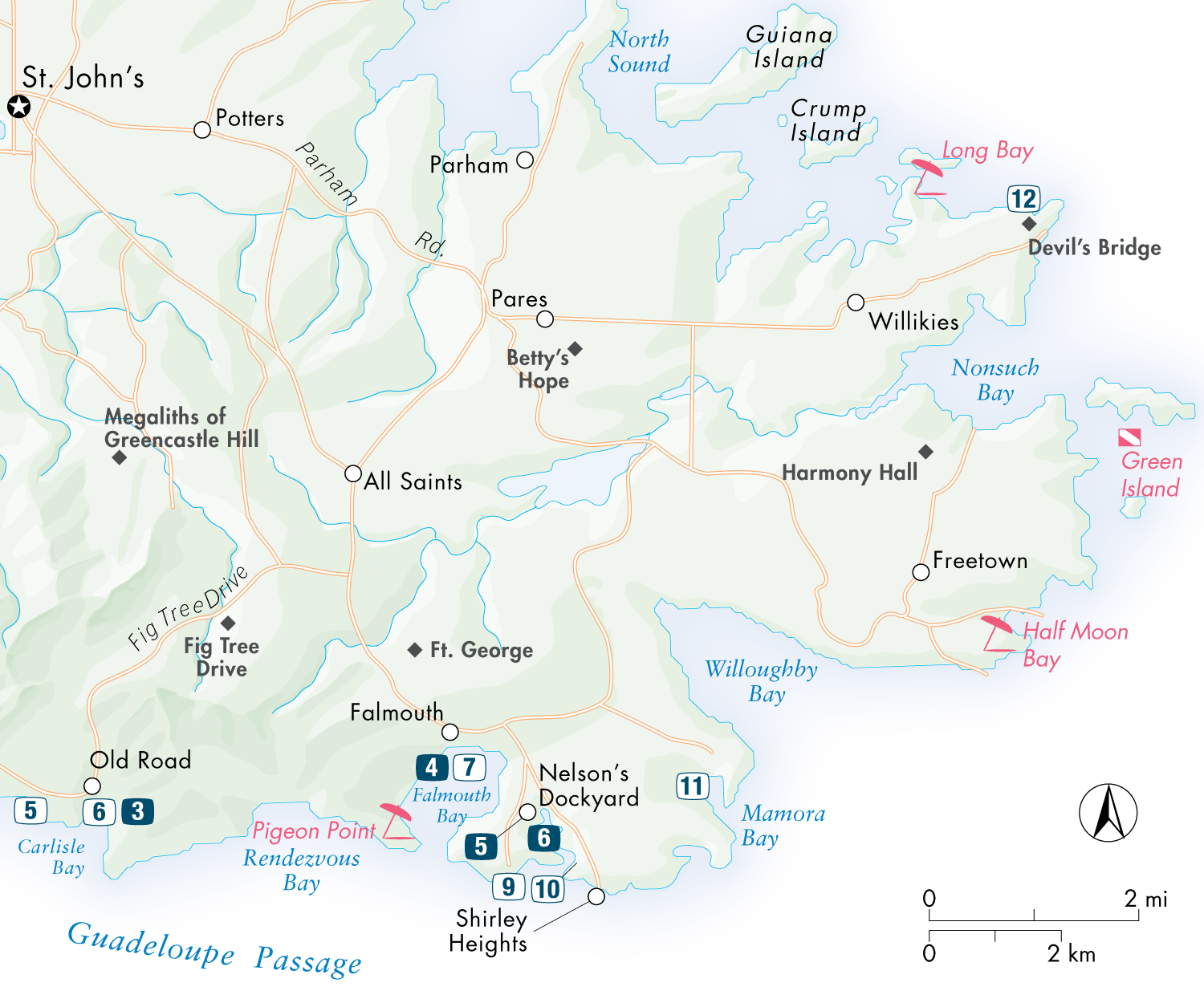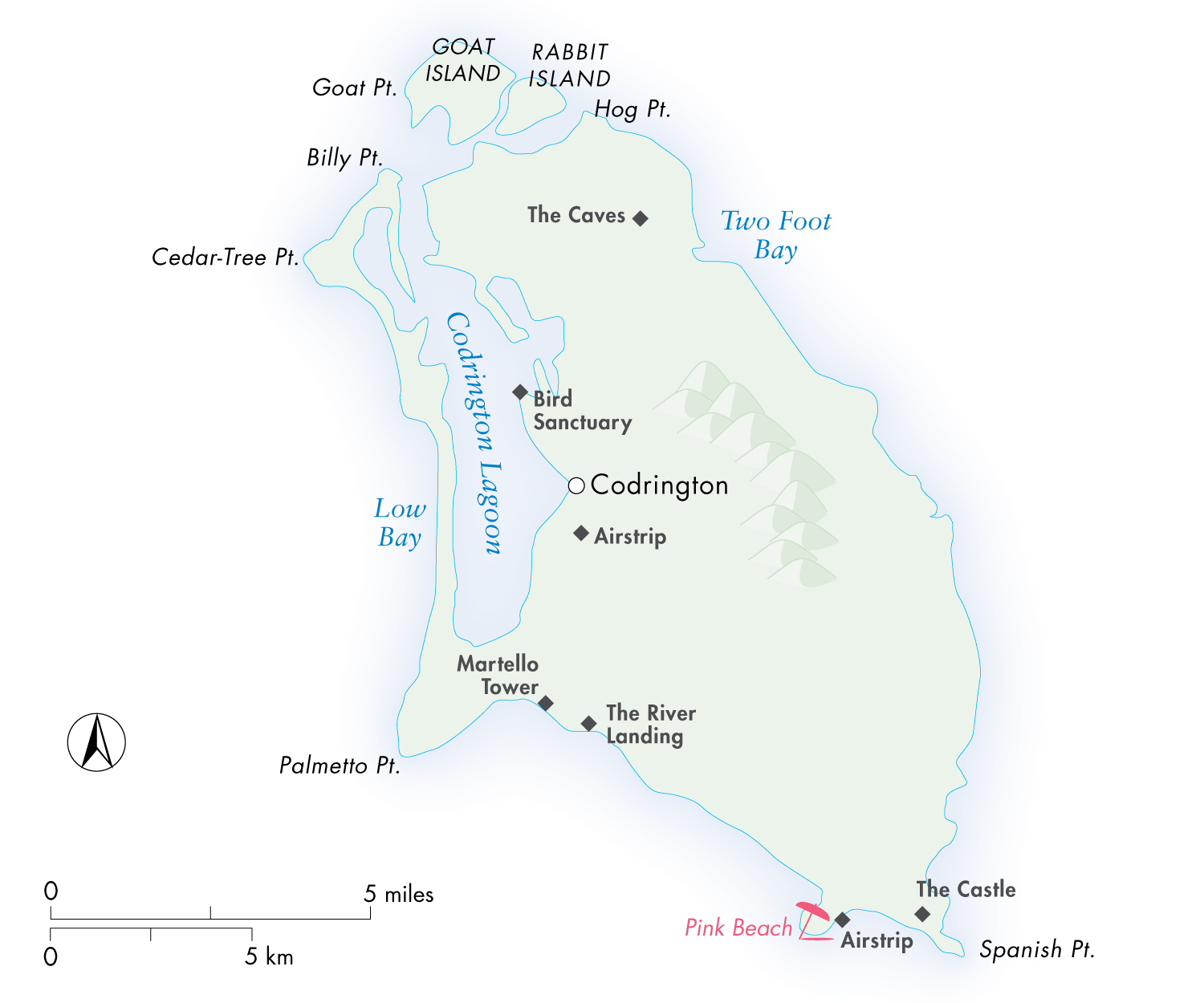WELCOME TO ANTIGUA AND BARBUDA
The wonder of Antigua, and especially its astonishingly undeveloped sister island, Barbuda, is that you can still play Robinson Crusoe here. Travel brochures trumpet the 365 sensuous beaches, one for every day of the year, as locals love saying, though when the island was first developed for tourism, the unofficial count was 52 (one for every weekend). Either way, even longtime residents havent combed every stretch of sand.
The islands extensive archipelago of cays and islets is what attracted the original Amerindian settlersthe Ciboneyat least 4,000 years ago. The natural environment, which is rich in marine life, flora, and fauna, has been likened to a natural supermarket. Antiguas superior anchorages and strategic location naturally caught the attention of the colonial powers. The Dutch, French, and English waged numerous bloody battles throughout the 17th century (eradicating the remaining Arawaks and Caribs in the process), with England finally prevailing in 1667. Antigua remained under English control until achieving full independence on November 1, 1981, along with Barbuda, 26 mi (42 km) to the north.
Boats and beaches go hand in hand with hotel development, of course, and Antiguas tourist infrastructure has mushroomed since the 1950s. Though many of its grand dames such as Curtain Bluff remain anchors, today all types of resorts line the sand, and the island offers something for everyone, from gamboling on the sand to gambling in casinos. Environmental activists have become increasingly vocal about preservation and the limiting of development, and not just because green travel rakes in the green. Antiguas allure is precisely that precarious balance and subliminal tension between its unspoiled natural beauty and its sun-sand-surf megadevelopment. And, of course, the British heritage persists, from teatime (and tee times) to fiercely contested cricket matches.
TOP ATTRACTIONS
So many paradisiacal beaches of every size provide a tremendous selection for an island its size.
Nelsons Dockyard is one of the Caribbeans best examples of historic preservation.
With several natural anchorages and tiny islets to explore, Antigua is a major sailing center.
Activities galore: land and water sports, sights to see, and nightlife.
A nice selection of shopping options, from duty-free goods to local artists and craftspeople (especially distinctive ceramics).
GETTING ORIENTED
At 108 square mi (280 square km), Antigua is the largest of the British Leeward Islands. Its much smaller sister island, Barbuda, is 26 mi (42 km) to the north. Together, they are an independent nation and part of the British Commonwealth. The island was under British control from 1667 until it achieved independence in 1981.
Restaurants
Hotels
Beaches
Restaurants
Hotels
Beaches
Beaches
ANTIGUA AND BARBUDA PLANNER
LOGISTICS
Getting to Antigua and Barbuda: Antigua is a Caribbean base, and several airlines fly there nonstop. You can continue on a small Winair plane to Barbuda, or there is ferry service several days a week, though its geared for day-trippers. Good package deals are often available from resorts.
Hassle Factor: Low for Antigua, medium for Barbuda.
On the Ground: Taxis meet every flight, and drivers will offer to guide you around the island. Taxis are unmetered, but rates are posted at the airport. Drivers must carry a rate card with them. The fixed rate from the airport to St. Johns is $12 (although drivers have been known to quote in Eastern Caribbean dollars), to Dickenson Bay $16, and to English Harbour $31.
If you are staying at an isolated resort or wish to sample the islands many fine restaurants, a car is a necessity, less so if you are staying at an all-inclusive with limited island excursions. Its possible to get by without a car if you are staying near St. Johns or English Harbour, but taxi rates mount up quickly. A temporary driving permit is required on the island ($20), and you drive on the left.
WHERE TO STAY
In Antigua youre almost certain to have an excellent beach regardless of where you stay. Dickenson Bay and Five Islands Peninsula suit beachcombers who want proximity to St. Johns, and Jolly Harbour offers affordable options and activities galore. English Harbour and the southwest coast have the best inns and several excellent restaurantsalthough many close from August well into October; its also the yachting crowds hangout. Resorts elsewhere on the island are ideal for those seeking seclusion; some are so remote that all-inclusive packages or rental cars are mandatory. Barbuda has one posh resort, one fairly upscale hotel, and several guesthouses.
Luxury Resorts: A fair number of luxury resorts cater to the well heeled in varying degrees of formality on both Antigua and Barbuda.
All-Inclusive Resorts: Most of the all-inclusives aim for a very mainstream, package-tour kind of crowdto varying degrees of successthough offerings such as Galley Bay are more upscale.
Small Inns: A few small inns, some historic, can be found around Antigua, mostly concentrated in or near English Harbour.
Hotel and Restaurant Costs: Restaurant prices are for a main course at dinner and include any taxes or service charges. Hotel prices are per night for a double room in high season, excluding taxes, service charges, and meal plans (except at all-inclusives).
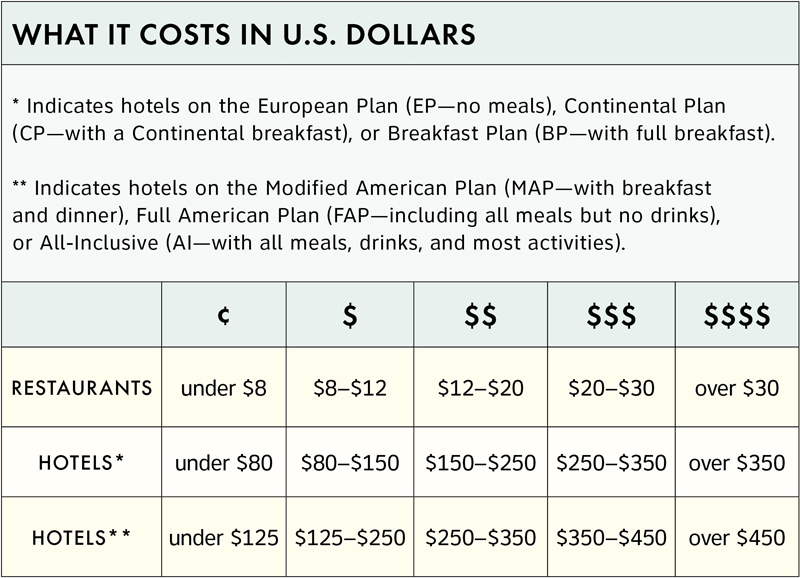
GETTING HERE AND AROUND
Air Travel: In addition to many nonstop flights from the U.S., Winair ( 268/4623147 or 866/4660410 | www.fly-winair.com ) flies daily to Barbuda, as well as to neighboring islands. LIAT ( 268/4805600 | www.liatairline.com ) has daily flights to and from many other Caribbean islands.
Nonstop Flights: Atlanta (Delta, twice-weekly in season), Charlotte (US Airways), Miami (American, Caribbean Airlines, Continental), New YorkJFK (American), and Newark (Continental).


